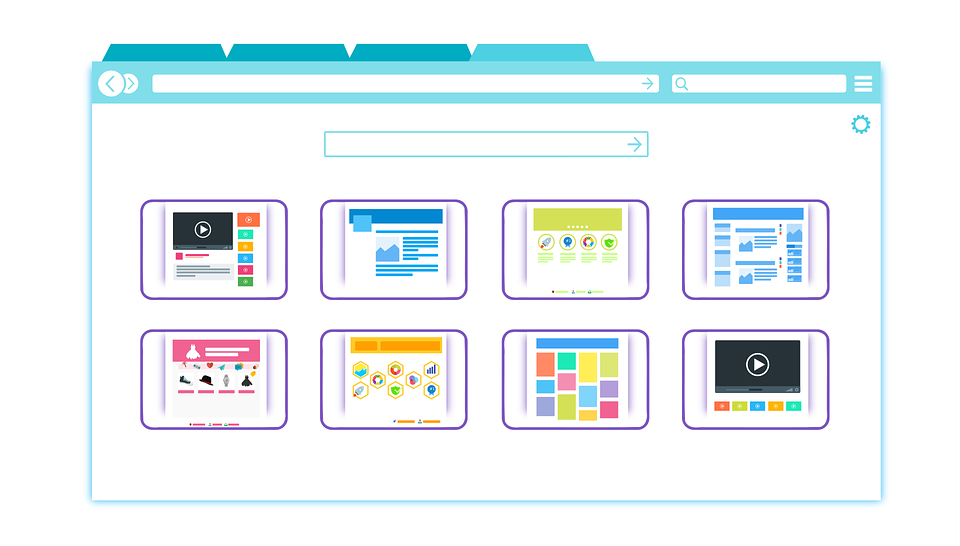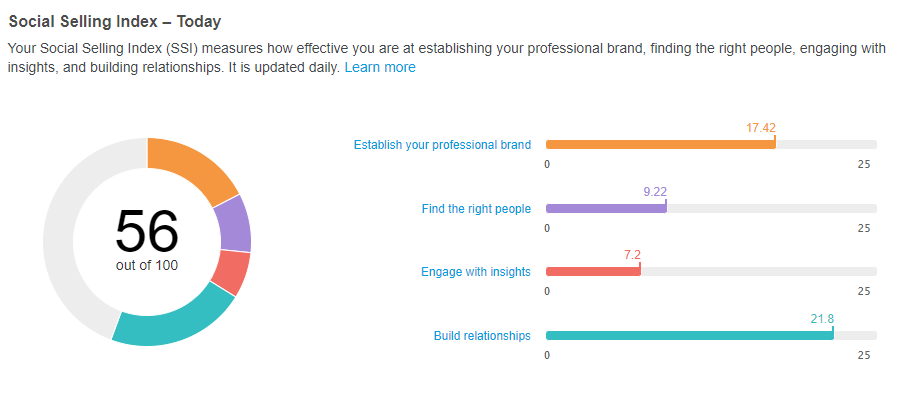Cold calling can get frustrating at times. Not to mention it has been less and less effective for years now, as sales reps and experts can easily confirm.
There’s a report that says 92% of buyers say they delete emails or voicemail messages when they come from someone that they do not know. That means you’re left with a mere 8% of buyers who will listen to your cold-call pitch.
In light of this discouraging news, sales people may need to use a new approach to generate leads and gain new customers. A focus on social selling is one possible approach that may be more effective.
What is social selling, anyway?
Social selling is about using your social networks to find, engage, and nurture the right prospects, build trusted relationships, close more deals and make a profit.

People often mistake social selling with social media marketing or social media advertising. While these are the responsibility of the marketing department, social selling actually falls in the hands of the sales department.
Sales teams should use social selling to educate their prospects and provide value by answering their individual questions and explaining aspects they are curious about.
It’s a completely different approach from the old sales model, which involved impersonal activities such as cold calling and sales demos. The average cold calling appointment rate is just of 2.5% and, as pointed out earlier, 92% of buyers say they delete emails or voicemail messages that come from someone they do not know.
Social selling, on the other hand, is all about educating prospects via social media about how your company can help them achieve their goals and ultimately grow their business.
It’s important to remember that even in B2B, people don’t buy from companies, they buy from people. Behind every website, there are decision-makers who have a say on what products or services are being sold and acquired.
Is social selling really effective?
A study from LinkedIn shows that over 76% of buyers say they feel ready to have a social media conversation and over 62% of those B2B buyers are more likely to respond to salespersons who connect with relevant insights and opportunities.
What did the salespeople say in the same study?
Nearly 73% of salespeople using social media outperformed their sales peers, and 54% of social salespeople have tracked their social selling back to at least 1 closed deal.
Before we get to the DO’s of social selling, let me quickly share some important DON’Ts:

- Infrequent logins. Social selling should be an ongoing activity, and you should monitor conversations daily and engage with your prospects regularly.
- Not actually making the connections. Ok, you’ve logged in, scrolled a bit, read some headlines and you’re out. That won’t do it. Selling is about building relationships, not spending the most time on social media or having the most LinkedIn connections.
- Pitching strangers. Don’t connect with a potential customer for the first time and hit them straight up with a sales pitch. Social selling is about nurturing prospects and building connections over time. Otherwise, you’re just going back to cold calling.
- Engaging with prospects before doing any research. You should learn as much as you can about a prospect before you engage in any sort of interaction. Check out their online profiles, see what they like doing, what they read, what they’re passionate about. This will help you personalize your outreach.
- Only sharing sales material. Try to be helpful by sharing content that your prospect will find useful and educational, especially if she is only in the first stage of the buying process.
Make sure you keep all of these DON’T’s in mind before creating your social selling strategy.
How to make social selling work
Now let’s get to the fun part: the DO’s. Assuming you already know who your ideal buyer personas are (and if you don’t, check out this article to learn all about buyer personas), here are some tips on how to make the most out of your social selling journey:
Optimize your social profiles
You should start by making your name and profile picture consistent across all the networks on which you’re present, to avoid confusion. After all, there can be more than one person online with the same name.
Cater your bio to each social network’s audience. Twitter descriptions are limited to 160 characters so you should use them wisely. Focus on sharing insight into what you’ll be talking about on Twitter, cross-promote other relevant branded accounts such as the company you work for, and include hashtags that your prospects may follow.

In contrast to Twitter, LinkedIn allows you to add more information about yourself. You can add a short and catchy headline about how you help, add a summary about your overall professional experience, mention your higher education degrees, list your specific professional experience, add skills and endorsements, and so on.
Add your social networks to your email signature, business cards, and PowerPoint presentations.
Fish where the fish are – find the best networks
Join social conversations that are relevant to you and your business. LinkedIn is the go-to platform for B2B while Twitter is more customer service oriented, great for fast communication. YouTube can also be extremely useful as consumers nowadays often compare and review products by viewing its videos.
You might want to consider choosing a mix of the platforms where your current audience is spending time.

Don’t forget that you can find and share discussions on your social feed, on groups (Facebook, LinkedIn) and from searching hashtags related to your industry or product.
Research prospects’ needs before engaging
Take the time to learn as much as you can about a prospect before you engage with them.
Monitor everything your prospects write, read their bios, check any updates to their profiles, and analyze their connections. Basically, collect as much information as you can. This will facilitate future engagements that are thoughtful and strategic.

Did you know that LinkedIn can give you instant notifications when your prospects join? Rather than relying on manual searches for that type of prospect, you can set up a saved search. Make sure to make it as specific as possible by using the Advanced filters, to get the best results.
Another great LinkedIn tool is Sales Navigator, which allows sellers to import contacts from Salesforce. It then provides you with a detailed report on these prospects’ activities and can also recommend new leads based on its findings.
Twitter allows you to build lists (which are kept private) and segment them based on different criteria, like active accounts you’re working on, decision-makers, or current clients, or based on the funnel stage, so you can personalize your approach every time.
Another way to make sure you’re connecting with the right audience is by joining specific groups where your prospects also belong. Facebook groups, LinkedIn groups, Twitter chats, Quora and so on will help you get a better picture of what issues your prospects are dealing with and what questions they have.
Be yourself
Drop the sales pitch. Try to be as helpful as possible in a genuine way; the pushy approach can scare prospects away.
While each social platform has its own unique environment and voice, you should stick to your true self, whether it’s friendly, fun, or trustworthy, and remain consistent across networks.
If you create and maintain a strong professional brand you will most probably receive more interest from prospects, as it shows you are a professional and active participant in your industry.
Post quality content regularly
You should strive to provide valuable content for your connections and followers on a regular basis, in order to build their interest and gather more interactions. Sharing content, ideas, and opinions is all that social media is about in the first place, so always give more than you receive if you want to be successful.
You should create your own curated online newspaper for specific accounts using Paper.li/ Feedly. These are great websites that will help you find fresh content to share further.

You can use tools such as Buffer or Hootsuite to schedule those posts in advance to save time and make sure you reach all time zones that are of interest to you. Certain types of content work better for certain days of the week or times of the year, making this scheduling especially helpful.
Also, it is very important to align your social selling efforts with your marketing team’s agenda. Always be aware of the arsenal of content the marketing team has, including blog posts, eBooks, webinars, datasheets, etc.
Share the success of your existing customers. Find case studies, success stories, and client testimonials and share them in a way that shows your genuine excitement for them, rather than relying on a “look what we did for you” approach.
Constantly nurture and provide value
Interact with your connections regularly, and not just to push them for the sales.
Did a prospect make a post about needing advice or help with something? Go on and offer your expertise and help them solve a problem. Did they just launch a book, or has their company launched a new website? Congratulate them on their success. Offer to introduce them to someone that could provide advice, introduce them to groups, or link them to discussions about which they might not know.
Spend at least 10 minutes each day to:
- Accept connection requests and even send a personalized thank you to prospects who requested them
- Respond to new messages
- Check notifications and alerts
- Follow new prospects
- Check news and conversations
- Engage: Like a few pieces of content, comment on some others, and share what’s worth sharing.
Add value on a consistent basis so you can become a trusted resource in your industry.

While keeping your eyes on the brand new shiny prize of gaining new customers, don’t neglect your existing customers on social media. Don’t forget that it’s six times more expensive to win a new customer than to retain an existing one. Take time to ask them questions, nurture relationships, and make them feel valued.
Track Results
No social selling strategy is perfect, which is why you should constantly assess results and compare them against efforts.
Start by collecting insights on your social selling activity; see what type of posts and activities perform the best.
- What time are posts getting the most interactions?
- Is there a particular style of post or piece of content that is performing better than others?
- Are LinkedIn users more engaged and receptive compared to Twitter users, for example?
- How many LinkedIn replies to messages have you received?
Also, for LinkedIn users, the platform produced the first-of-its-kind social selling measurement called The Social Selling Index (SSI). It measures how effective you are at establishing your professional brand, finding the right people, engaging with insights, and building relationships. I would say it’s a pretty good place to start in order to see how effective your activities have been, at least at a general level.

Sales people can also ask their marketing team for data they’ve received from Google Analytics. You can see where a visitor comes from when first entering the website, and what triggered them to fill in a form or choose to sign up. Don’t forget to track the links to your website that you want to share on social media using the URL builder, to make it easier to track, sort, and analyze content and to link it back to something that you accomplished as a sales person.
Last but not least, you should exercise patience when it comes to expert social selling. Results don’t happen overnight. Use tools to measure results for a better understanding of what is working, but don’t forget that patience and commitment are key.
Have you tried social selling before? Care to share your thoughts, experience, or ideas?






